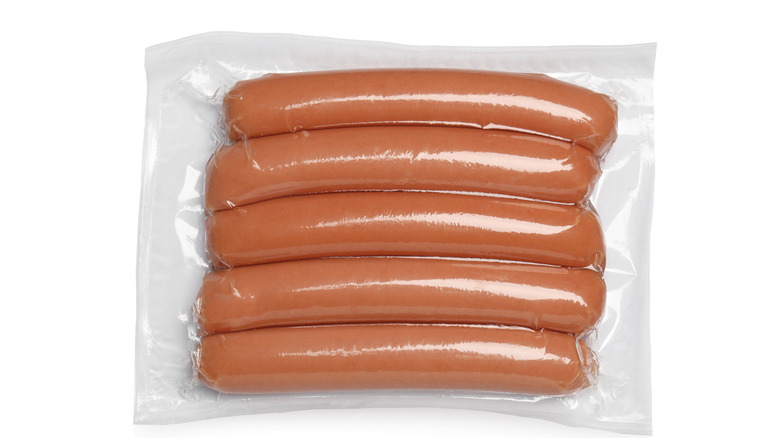Your Biggest Mistake With Hot Dogs Begins In The Grocery Store
Juicy, tender, and simple to make, hot dogs are easily one of the most beloved snacks in the world, with some unique version of the pre-cooked sausage sold on just about every continent. But despite their relative simplicity, there are a number of big mistakes people commonly make when it comes to hot dogs. One of the most egregious (and easily avoidable) errors? Purchasing low-quality franks. While it may seem like the difference between dogs is negligible, there are clear flavor distinctions between the best and worst hot dogs available at the grocery store. For tips on how to shop for the highest quality hot dogs on the market, Food Republic spoke to Golan Haiem, founder and CEO of Destination Wagyu.
When shopping for hot dogs, according to Haiem, it's smart to avoid getting bamboozled by fancy packaging and pay attention to what's actually inside. "I always advise shoppers to look beyond branding and focus on ingredient transparency," he said. Though they've historically been shrouded in an air of mystery, all hot dogs are made using the same basic process: Cuts of meat are blended into a mixture that gets stuffed into casings and cooked before packaging. It's the type and quality of meat, though, that makes all the difference. "The label should list a high percentage of actual meat, ideally [100%] beef, and it should be clear about the cut and source," Haiem explained.
What to look for on a hot dog label when grocery shopping
With so many options to choose from at the supermarket, shopping for the most delicious hot dogs can require a bit of extra effort and know-how. However, the easiest way to differentiate products, according to premium beef expert Golan Haiem, is by looking at the length of the ingredients list. "Quality hot dogs typically have a short ingredient list: meat, salt, spices, and natural preservatives, if any," he noted. "A well-crafted label usually reflects a well-crafted product."
The language used on the packaging can also be a helpful indicator of how the hot dogs were produced, and if the brand is trying to sneakily hide shady ingredients. "Avoid hot dogs that include mechanically separated meat, added nitrates, or vague terms like 'meat product' or 'by-products,'" Haiem added.
While many brands will make their hot dogs with a combination of beef, chicken, and pork off-cuts, Haiem explained that there are meaningful differences between the flavor and texture of all-beef and mixed-meat products. "All-beef hot dogs tend to have a richer, more robust flavor," he said. "When made with high-marbling beef such as Wagyu, that results in a buttery mouthfeel and a juicy texture." Even between beef hot dogs, the kind of casing used for a product can also cause a noticeable difference in quality. Haiem recommended shopping for hot dogs made with natural casings, which "provide that iconic snap that many people associate with a premium hot dog."


